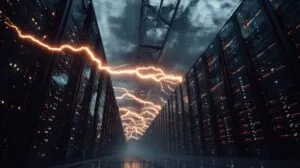Conflict resolution stands at the heart of social progress and harmony. In a world marked by rapid technological change, shifting cultural landscapes, and pressing geopolitical challenges, finding common ground becomes a vital skill.
Effective resolution practices help manage differences among individuals, groups, and nations, paving the way for growth, cooperation, and peace.
In today’s environment, the ability to address disputes constructively is not merely an advantage—it serves as a necessity.
Table of Contents
ToggleWhy Disagreements Look Different Now

Disputes aren’t what they used to be. What once might have been a face-to-face argument or a workplace disagreement now stretches across digital platforms, cultural divides, and ever-shifting social landscapes.
Today’s conflicts are layered, fast-moving, and often emotionally charged — and handling them requires more than just old-school mediation. Here’s what’s reshaping the landscape:
Tech Tangles
From keyboard warriors to deepfake dramas, online conflict brings a whole new level of complexity. Virtual harassment, misinformation, and cybersecurity threats now demand smarter, tech-savvy approaches.
Global Crossroads
Increased connectivity means people from every corner of the world are interacting more than ever. And while that opens the door to rich exchange, it can also spark tension when beliefs, traditions, or communication styles clash.
New Rules, New Norms
Social expectations aren’t static — they shift with generations, movements, and media influence. What was acceptable a decade ago might now trigger strong reactions.
Today’s resolution strategies need to keep up with changing perspectives and new modes of expression.
Workplace Harmony and Thriving Teams
Tension at work doesn’t just cause awkward meetings—it can quietly chip away at morale, productivity, and even talent retention. When conflicts sit unresolved, collaboration suffers, creativity stalls, and high performers may start eyeing the exit door.
On the flip side, a culture that prioritizes resolution over rivalry becomes a breeding ground for fresh ideas and strong teamwork. A few practical shifts can make all the difference:
- Active Listening That Actually Works: It’s more than just nodding politely. Giving people space to express their perspectives without interruption often brings the real issues to light—no guesswork is needed.
- Clear, Candid Communication: When everyone’s on the same page, there’s less room for tension to simmer. Transparency builds trust, and trust makes even the tough conversations easier to have.
- Conflict-Savvy Training That Sticks: Think of workshops with real-life scenarios, not eye-glazing lectures. Hands-on skills give teams the confidence to tackle issues early—before they snowball.
Leaders who champion these approaches aren’t just keeping the peace; they’re shaping workplaces where people feel heard, respected, and motivated. Teams thrive when the focus shifts from power struggles to shared purpose—and that’s where true innovation takes root.
Cultural Sensitivity in a Connected World

When people from different backgrounds come together—at work, in communities, or across borders—it’s natural for perspectives to clash from time to time. After all, what’s considered polite in one culture might be seen as abrupt in another.
That’s where a little cultural awareness can go a long way in preventing small misunderstandings from turning into bigger issues. Here’s what makes a difference:
Lead with Empathy and Respect
Seeing the world through someone else’s lens helps create space for open dialogue. Appreciating different customs, communication habits, and belief systems encourage mutual respect—and fewer assumptions.
Culturally Aware Mediation Works Wonders
When mediators bring cultural intelligence to the table, conversations tend to be more productive. Tailored approaches that consider social norms and values often pave the way for solutions everyone can stand behind.
Bring Everyone to the Table
Collaborative efforts that involve all voices—especially from underrepresented groups—create stronger outcomes. When people feel seen and heard, tensions ease and common ground becomes easier to find.
The Emotional Pulse Behind Every Conflict
@answeranxiety 🔥 Hot-headed after an argument? Learn to regulate emotions, cool off your brain, and embrace conflict as a path to lasting change. Keep calm and carry on #ConflictResolution #EmotionalRegulation #MindfulLiving #arguments #conflict #mindful #mindfuleness #mentalhealthtips ♬ original sound – Dr. Arianna Brandolini
Let’s face it—emotions often run the show when tensions rise. Even the most logical disagreements can spiral if feelings aren’t handled with care. That’s where emotional savvy comes in.
Tuning into what’s really going on beneath the surface can make all the difference.
Emotional intelligence—the ability to manage your own reactions while reading the room—isn’t just a nice to have; it’s a powerhouse skill during moments of tension.
Here’s how emotional awareness can help keep things steady:
- Staying Cool Under Pressure: Simple regulation techniques, like mindful pauses or grounding exercises, keep discussions on track instead of going off the rails.
- Listening with Heart: Picking up on tone, body language, or a subtle shift in energy helps shape responses that calm rather than escalate.
- Training for Tough Moments: Stress management and communication workshops equip people with tools to handle high-stakes conversations without losing their cool.
Restorative Justice & Community Healing

Repair over revenge — that’s where real transformation begins. When the focus shifts from punishment to healing, the results often speak for themselves.
Restorative justice isn’t just a method; it’s a mindset built on accountability, dignity, and connection. Here’s why it works:
Open Conversations that Matter
When everyone involved gets a seat at the table, healing becomes a shared mission. People feel seen, heard, and more willing to take meaningful steps forward.
A Sense of Ownership
Those impacted by harm — on both sides — play an active role in finding solutions. That kind of participation creates real investment in making things right.
Stronger, More United Communities
Repairing relationships leads to stronger social ties. Trust gets a second chance, and neighborhoods grow more resilient in the face of future challenges.
Across the globe, restorative programs have been turning conflict into connection — not through force, but through conversation, empathy, and shared commitment. It’s proof that healing isn’t just possible — it’s powerful.
What Ukraine and Gaza Teach Us About Peacebuilding
Global peace doesn’t just happen—it’s often the result of hard conversations, bold diplomacy, and a whole lot of compromise.
When tensions escalate on a worldwide scale, the way conflicts are handled can shape the future for millions. Just look at what’s happening in Ukraine and Gaza—two powerful reminders that how we respond matters.
Ukraine Conflict
Efforts in Ukraine highlight the power of negotiation over confrontation. International groups have stepped in to cool the temperature, bringing opposing sides to the table and pushing for calm where chaos once ruled.
From ceasefire agreements to humanitarian corridors, there’s been a strong push to protect lives while inching closer to something that resembles stability. It’s not perfect—but it’s progress.
According to The Guardian, in March 2025, during negotiations held in Jeddah, Saudi Arabia, Ukraine agreed to a U.S.-proposed 30-day interim ceasefire, contingent upon reciprocal implementation by Russia.
This ceasefire aims to halt missile, drone, and bomb attacks along the entire frontline, including the Black Sea region. The agreement also emphasizes humanitarian efforts, such as the exchange of prisoners of war, the release of civilian detainees, and the return of Ukrainian children forcibly transferred to Russia.
Gaza Situation
In Gaza, conversations between leaders, peacekeepers, and community figures have been key to easing tension. Global mediation efforts have helped prevent full-blown escalations, showing that meaningful dialogue still has a place in even the most charged situations. The focus? Protecting people, not posturing for political points.
As we can gather from AP News reports, International mediation has been pivotal in preventing full-scale escalations in Gaza. For instance, Qatar has played a significant role in mediating between Israel and Hamas.
Qatar reconsiders mediator role between Hamas and Israel https://t.co/680ZkYLMnm
— Financial Times (@FT) April 18, 2024
Qatari Prime Minister Sheikh Mohammed bin Abdulrahman Al Thani facilitated crucial negotiations that led to a ceasefire agreement in January 2025, ending 15 months of conflict.
His efforts were instrumental in bridging the deep-seated distrust between the parties, underscoring the importance of global mediation in conflict resolution.
Leadership Is the Quiet Power Behind Peace
Peace doesn’t just happen — it’s often sparked by strong, thoughtful leadership. The way leaders approach tension can either fan the flames or cool things down. And those who lean into respectful dialogue? They tend to set the tone for everyone else to follow. Great leaders don’t just talk about resolution — they model it. Here’s what sets them apart:
- Clear Vision, Strong Voice: Leaders who communicate a bigger picture — one rooted in cooperation and harmony — naturally inspire people to work together instead of pulling apart.
- Quick Thinking, Fair Action: Conflicts can snowball fast. The right leader knows when to step in, make a call, and keep things from turning messier than they need to be.
- Integrity That Speaks Louder Than Words: When people see a leader walking the talk — owning their actions and holding others accountable — it builds trust. And trust is everything in conflict resolution.
Leadership isn’t just about boardrooms or political stages. It shows up in neighborhoods, schools, workplaces — anywhere people come together. When leaders lean into peace-building, it sends out a powerful ripple effect that strengthens teams, transforms communities, and brings real, lasting change.
The Cost of Letting Conflict Linger

When tensions go unchecked, the ripple effect can hit wallets—hard. From boardrooms to international negotiations, unresolved friction doesn’t just stir emotions; it stirs up economic trouble too.
Markets Get Jittery
Ongoing tensions can rattle investor confidence, causing financial slowdowns and pulling the brakes on economic momentum.
Work Grinds to a Halt
In organizations, unresolved friction often shows up as missed deadlines, mounting legal fees, and teams struggling to stay focused. Productivity takes a hit, and morale usually tags along for the fall.
Money Drains in the Wrong Direction
When too much time and cash are spent managing conflict instead of driving progress, growth takes a backseat. It’s like pouring resources into a leaking bucket—inefficient and unsustainable.
Summary

Effective conflict resolution remains a cornerstone of social progress and stability in today’s dynamic environment.
From digital innovations and cultural exchanges to high-stakes international disputes in Ukraine and Gaza, the capacity to manage disagreements constructively underpins human progress.
Leaders, educators, and community advocates hold the keys to unlocking a future where disputes transform into opportunities for growth and unity.
Embracing practical strategies, technological advancements, and emotionally intelligent approaches helps build resilient organizations and societies. By committing to proactive measures and innovative research, every individual contributes to a larger tapestry of peace.
When conflict finds a channel for resolution, life flourishes, creativity blooms, and communities thrive. A commitment to these principles remains an investment in a brighter, more harmonious future for all.
Related Posts:
- Safest Countries in the World in 2025 - GPI…
- What Is the Most Dangerous Country in the World in 2025
- Capital Cities in Europe: Top Destinations For You…
- 26 Most Dangerous Cities in US - Updated Statistics for 2025
- 10 Key Differences Between Mennonite and Amish Communities
- America's Murder Capitals: A 2025 Ranking of the…








